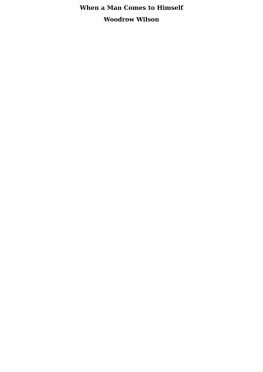Scandinavian Folk-History
Including
Finnish Origins
Ancient Icelandic Folklore
Popular Danish Tales
Contents
AN ANALYSIS OF CERTAIN FINNISH
ORIGINS.
__________________
IF such branches of knowledge as zoology, botany, and geology were confined to a study of the external surfaces of animals, plants, and the outer crust of the earth, without taking note of the skeleton, of the internal structure, or of the underlying strata, our knowledge would be vastly curtailedwould be of comparatively little account. There is ground, therefore, for supposing that the analysis of the internal structure of a set of origin-stories will not be wholly useless. Several reasons suggest themselves for selecting for this purpose the group of origins taken from the magic songs of the Finns, which have appeared in various issues of FOLK-LORE. Their number is considerable. Including variants and other versions, they amount to one hundred and thirty-five, embracing fifty-one different subjects. They all belong to one country and people, are all couched in the same ballad metre, exhibit the same imagery and treatment, and belong, so far as their external form is concerned, to one period, and that a modern one. Though there are nearly fifty more Finnish prose origins, I have not included them, as some are clearly importations from over the border, and their general character and style is quite different from the metrical ones. For instance, a considerable number describe metamorphoses from men into animals, generally as a punishment, a mode of origination which is not found in the metrical origins, though it is true such transformations are not unknown in the Kalevala.
The analysis about to be submitted to you is not of the same kind as that employed by our Society in analysing folk-tales. It is more abstract. My object has been rather to lay bare the mental process by stripping off every particle of individuality till nothing is left but a formless, though still a differentiated residuum. Reduced to this state, we can view in a small compass the different threads of thought, twenty-seven in number, on which smaller groups of origins are strung. When arranged in systematic order, they form a series, progressing from those that consist of one central thought, of one single germ, to others that exhibit various degrees or modes of development by means of an accompanying narrative. And in order to show the universality of these threads of thought or categories, as we may now call them, they have been illustrated, whenever I could do so, by examples drawn from the origin-stories and myths of other peoples in different parts of the world. Though it must not for a moment be supposed that all known origins can be compressed into twenty-seven categories. That is very far from being the case.
Each category, expressed in about a couple of lines, consists generally of two parts: (1) The central thought, such as S. (any subject), originates from O. (an object); and (2) the drift of the narrative in its bearing upon S. or O. With one exception, the case in which a given subject is created by God, the central thought possesses two terms. First, the subject, such as wolf, snake, oak; secondly, the parents from which it is born, or the inanimate object from which it originates. Further, there must be mentioned one very important factor which is inherent in the nature of the subject and object, and that is their likeness or unlikeness to each other. It is evident that, when the idea of seeking for the origin of anything entered the mind, that the imagination, starting from a given subject, had to find either suitable parents, or an object of some kind from which to derive it. The mind had to pass in rapid review the stores laid up in the memory, and to make choice But this likeness is not necessarily external and physical: it is often quite indirect and subjective; or, if the origin results from an action, the likeness is to be found either in the agent, or in the result of the action. The instances in which there is no apparent resemblance between subject and object, or the parents from which it is born, only amount to about ten per cent. The second part of the category, when there is one, gives the general drift of the preliminary narrative solely with regard to its direct reference to the first part, which, in fact, follows it, and forms the dnouement. It often happens these references are mere hints, but they show that the narrator was gradually working up to a finale, of which he had a clear picture in his mind. For there are origin-stories in which the previous incidents are quite irrelevant to the conclusion, and the origin appears to be merely the result of a chance thought.
In so far as they have all been collected within the last hundred years, all these origin-stories are modern. But though their dress belongs to recent times, many of the ideas they embody diverge so greatly from the modern standard of physical law and of reason, that some of them may be regarded as survivals from an older stage of mental development. Though the word survival strictly connotes the notion of uninterrupted continuity between its extreme terms, it does not involve any exact notion of length. Survivals may therefore be of different lengths or ages. If a line A Z be taken to represent the earliest possible survival down to the present time, then F Z, S Z, V Z will represent shorter ones, the alphabetical distance of F, S, V from Z showing their relative distances from that point. Unfortunately, it is impossible to determine solely by an priori argument which survivals have a length S Z and which a length V Z. The difficulty lies in deciding whether the mental state of people between the periods S and V had been at such a standstill that the author of an origin in the latter period thought exactly as if he had lived in the former period, or whether he was merely imitating an old type when giving expression to a whimsical fancy with full consciousness that it was so. For it cannot be doubted that the Finns in their mental creations of later times, after contact with more civilised peoples, did employ tropes and metaphors in their poetry merely as ornament, without intending them to be taken literally. The wide diffusion and popularity of riddles also proves that very quaint metaphors were in the mouths of the people, who used them in joke, and not in earnest. A regular law, too, of development requires a transition period between the strange beliefs they must have held before they occupied Finland, and those which they hold now. During such a stage, some persons would take a marvellous statement as matter of fact; others, possessed of more insight, would understand it as a humorous or poetical figure of speech.
Though priori reasoning is unavailing by itself, yet, combined with other data, we are sometimes able to assign to some origin-stories an approximate date. Taking into consideration that, in the life and imagination of a race of hunters like the early Finns, animals must have played a greater rle than they did in later times, we may perhaps assume this: that, when an animal origin is ascribed to a subject in some stories, and a non-animal origin in others of similar type, the former belongs to a rather older stratum of thought, or to a survival of greater length. For instance: 1. In one version of the cowhouse snakes origin (41d)wolf running along the ice, which fell on a pike swimming under the ice. The slaver drifts ashore, is picked up by a girl, and carried to a cowhouse, where it becomes a snake. 2. In one version of the snakes origin (11a) this is attributed to the saliva which fell from the mouth of a sleeping Hiisi, or Devil. An ogress swallows it, and finding it too hot, spits it out on the sea. It drifts ashore, is hardened into a spiral form, and then Hiisi gives it life. 3. A fir-tree also originates from the hair of a wolf running along the ice, from the tooth of a pike swimming under the ice. A hair falls off, a girl picks it up and plants it, with the root-end in the ground. It then turns into a fir (23



